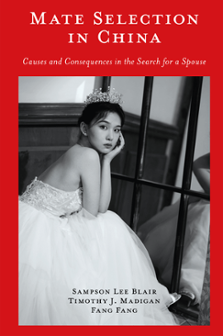
Index
Mate Selection in China: Causes and Consequences in the Search for a Spouse
ISBN: 978-1-78769-332-6, eISBN: 978-1-78769-331-9
Publication date: 21 April 2022
Citation
Blair, S.L., Madigan, T.J. and Fang, F. (2022), "Index", Mate Selection in China: Causes and Consequences in the Search for a Spouse, Emerald Publishing Limited, Leeds, pp. 195-198. https://doi.org/10.1108/978-1-78769-331-920221013
Publisher
:Emerald Publishing Limited
Copyright © 2022 Sampson Lee Blair, Timothy J. Madigan and Fang Fang
INDEX
- Prelims
- Chapter 1: History of Family Dynamics and Mate Selection in China
- Chapter 2: Economic, Political, and Social Change in China
- Chapter 3: The One-Child Policy and Demographic Transitions
- Chapter 4: Contemporary Dating and Mate Selection: Parents, Peers, and Sexual Intimacy
- Chapter 5: Cohabitation and Divorce
- Chapter 6: Fertility and Mate Selection
- Chapter 7: Shengnü – The “Leftover Women”
- Chapter 8: “Bare Branches”: Involuntary Bachelorhood in China in the 21st Century
- Chapter 9: Aging Parents and Familial Support
- Chapter 10: Criminal Consequences: Prostitution and Human Trafficking
- Chapter 11: The Future of Mate Selection
- Index